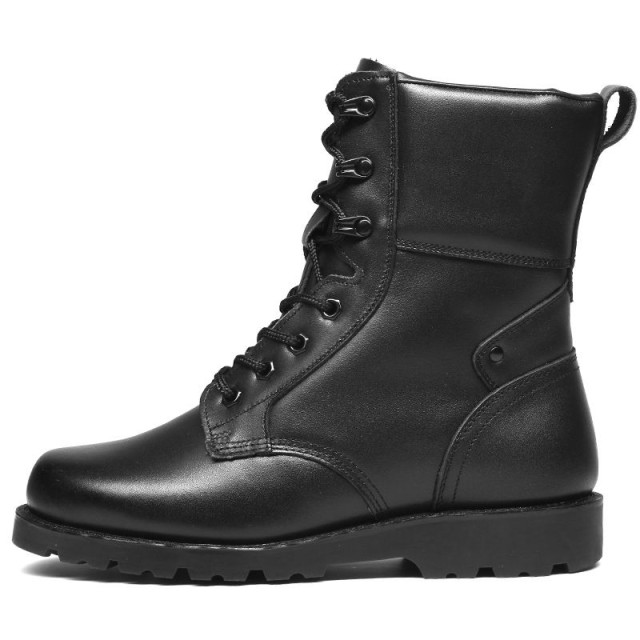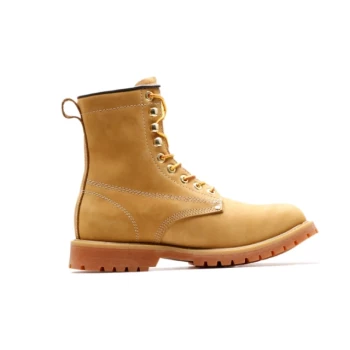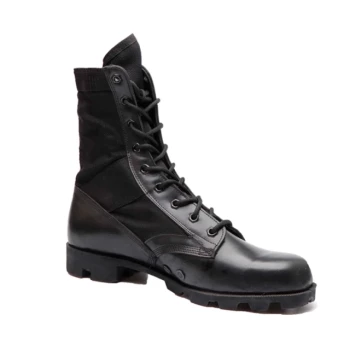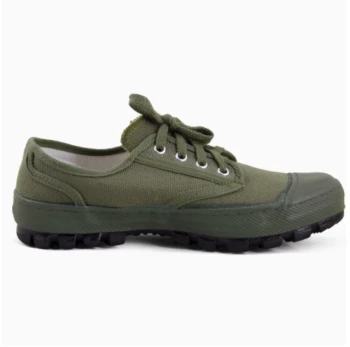For footwear manufacturers and designers, achieving durable Goodyear welting isn't just about craftsmanship—it's a precise engineering challenge. The longevity of welted footwear hinges on calculated pairings between tools, threads, and materials that address specific structural demands. This guide breaks down the critical relationships between needle gauges, thread tensile properties, and workload requirements to help bulk producers optimize their welting processes.
Engineering Durable Stitch Joints
The Role of Needle-to-Awl Proportionality in Stitch Density
Research shows that stitch integrity in Goodyear welting depends on maintaining a 1:1.2 ratio between needle diameter and awl penetration width. This proportional balance:
- Prevents thread fraying during high-tension stitching
- Allows consistent wax penetration for moisture resistance
- Maintains optimal stitch density (6–8 stitches per inch for standard welting)
Deviations beyond a 15% variance in this ratio risk seam failure under repeated flexing—a key consideration for manufacturers targeting industrial or outdoor footwear markets.
Coretex Thread Grades: Tensile Capacity vs. Flexibility Tradeoffs
Premium polyester-core threads like Coretex G40 (common in orthopedic shoemaking) offer:
- High tensile strength (withstand over 25 lbs of linear pull force)
- Controlled elongation (≤8% stretch under load to prevent seam distortion)
However, their stiffness requires pairing with:
- Sharper #18–#20 needles to reduce friction
- Wider awl channels (0.6–0.8mm) to minimize heat buildup
For dress shoes prioritizing suppleness, Coretex S30’s silk-polyester blend provides better drape at a 15–20% tensile strength reduction—a viable tradeoff for low-impact footwear.
Workload-Specific Configurations
Heavy Work Boots: Shear Resistance Through Cross-Section Optimization
Field studies of logging and construction boots reveal that X-shaped stitch patterns (alternating diagonal stitches) increase shear resistance by 30–40% compared to straight stitching. This technique:
- Distributes lateral forces across multiple thread axes
- Compensates for rigid outsole materials
- Works best with:
- Flat-woven nylon threads (0.55–0.65mm thickness)
- Curved needles (#16–#17) for angled penetration
Lightweight Construction: Minimizing Bulk Without Sacrificing Seam Security
Athletic and travel shoes using Goodyear welting benefit from:
- Micro-grooved awls (0.4mm channels) reducing thread volume by ~22%
- Triple-twist cotton/poly blends balancing flexibility and abrasion resistance
- Staggered stitch spacing (5–6 SPI) to maintain breathability
Sustainability Meets Performance
Why Coats EcoVerde is the Universal Bobbin Choice
Leading manufacturers now standardize on this recycled polyester bobbin thread because it:
- Matches virgin polyester’s strength (tested to 20+ lbs tensile)
- Reduces energy consumption in production by approximately 35%
- Maintains consistent twist memory across humidity ranges
Independent testing confirms EcoVerde’s compatibility with all major needle types (#15–#21), eliminating the need for thread-specific machine adjustments during batch production changes.
Engineer Better Footwear with 3515’s Expertise
As a full-scale footwear producer, 3515 implements these material science principles across our workboot, dress shoe, and specialty footwear lines. Let’s collaborate to build welted shoes that outperform their warranty periods—contact our technical team to discuss your project’s structural requirements.
Related Products
- Durable Leather Work Boots for Wholesale & Custom Manufacturing
- Durable Leather Work Boots Wholesale Manufacturer & Custom Factory
- Wholesale Durable 6-Inch Work Boots | Custom & Private Label Manufacturer
- Safety Footwear Wholesale Manufacturer for Custom OEM/ODM Production
- Wholesale Safety Footwear Manufacturer for Bulk & Custom OEM Orders
Related Articles
- When Pull-On Work Boots Make Sense: Optimizing Convenience Without Sacrificing Safety
- How TPU Soles Revolutionize Work Boot Performance: Safety, Durability & Cost Benefits
- How Men's Work Shoes Solve Industry-Specific Safety Challenges
- How to Wear Sneakers Professionally: A Style Guide for Modern Workplaces
- How Lace-Up Work Boots Solve Workplace Safety Challenges



















